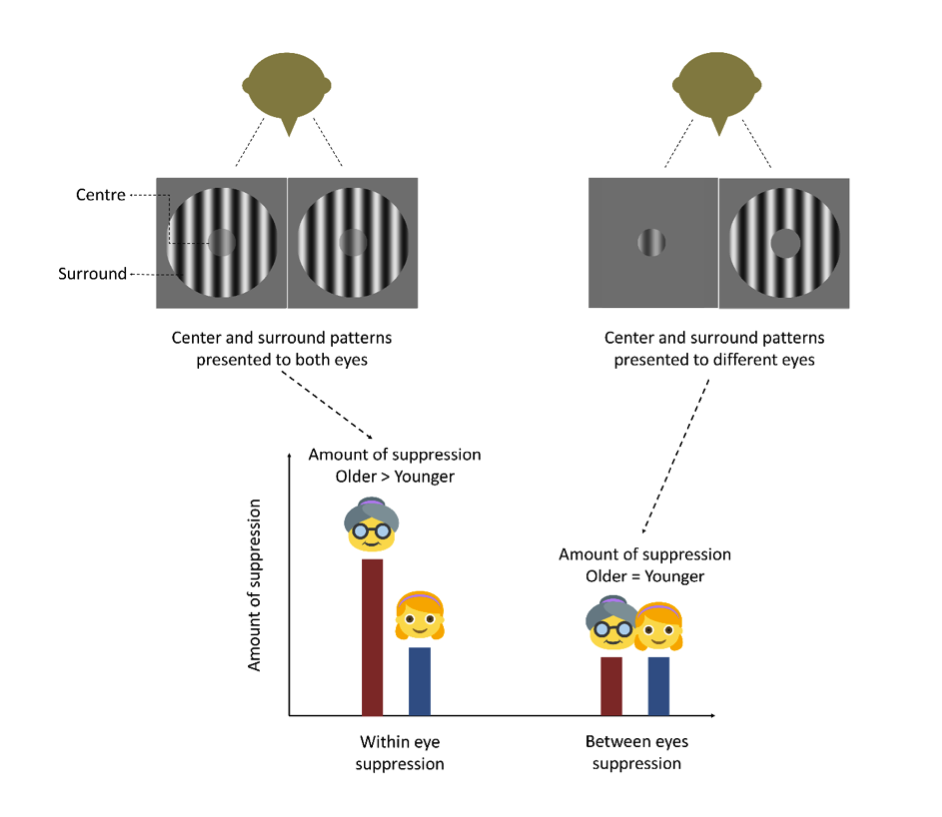As described in our previous lab blog posts, we have a long standing interest in trying to understand how healthy aging affects vision. Specifically, many of our research projects involve the design of experiments that can tell us more about which visual neural processes are altered by the aging process. A number of our experiments have investigated a phenomenon called centre surround contrast suppression. This phenomenon describes the visual experience in which a high contrast grey and white pattern will appear to be of lower contrast when surrounded by another higher contrast pattern. By manipulating different aspects of the central or surround pattern, we can test separate neural pathways that are responsible for visual experience.
In this particular experiment, we take advantage of the anatomical fact that neurons that carry information from the two eyes do not directly communicate until they reach the areas of the brain responsible for visual processing.
Centre surround contrast suppression can be elicited when by showing the centre and surround pattern to the same eye (‘within eye’ suppression). This is how most studies are conducted. Centre surround contrast suppression can also be elicited by showing the centre pattern to one eye and the surround pattern to the other eye (‘between eyes’ suppression). ‘Between eyes’ suppression is particularly informative because we know that it can only occur once information from the two eyes is combined in the brain. In this study, we measured both ‘within eye’ and ‘between eyes’ suppression. The figure below shows the visual patterns used in the study and summarises the results.

When the centre and surround patterns were shown to both eyes, the amount of suppression (i.e. the amount by which the contrast of the centre pattern appeared lower than its actual contrast) was higher in older individuals than in younger individuals. However, when the centre and surround patterns were shown to different eyes, both younger and older individuals showed similar amounts of suppression. This indicates that the difference between older and younger adults is not general, but quite specific to the “within eye” condition.
The complete findings of this study have been recently published in Journal of Vision and can be accessed here.